So far I have been primarily working with two of CPCD’s projects in Araçuaí. Ser Criança (To be a Child) and A Gente Cultura Viva (Our Living Culture). I have also been photographing in their folk art factory and helping out in the office.
At the moment, my most exciting task is to make documentary videos with children and teenagers that will screen at the inauguration of the new cinema that CPCD is building in the center of Araçuaí. The short videos will address the history and culture of Araçuaí.
Here is a picture of the space. The cinema is supposed to be finished in February. I will send you and invitation!
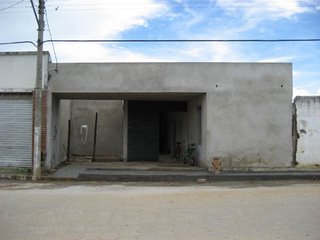
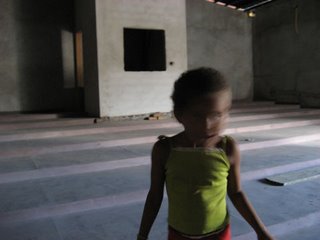
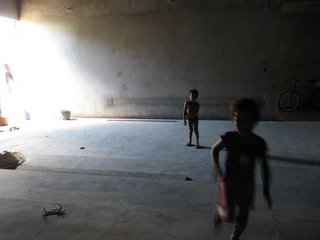
CPCD already has itinerant cinemas that travel to surrounding rural communities. So far they have been screening films like Finding Nemo. They have not shown anything that has been made within this community. I am hoping that the videos that the children make will screen in the itinerant cinemas as well as the in the new permanent space and possibly other, more unpredictable, public sites. (CPCD also has an LCD projector.) CPCD is hoping to house an editing studio in the new cinema and create a filmmaking workshop for children and teenagers to continue making films.
I have already started to work on storyboards with some of the children.
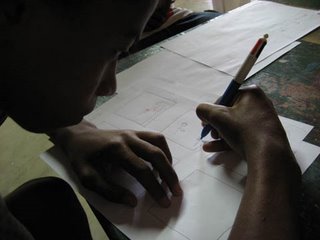
I am working within a wide age range. A group of children ages 6-14 and a group of 16-17 year olds. Tomorrow I am running a workshop to teach the educators, the concerned mothers group, and the teenagers about the possibilities of video and photography. I spent the weekend making a PowerPoint presentation in Portuguese.
here is a piece of the presentation:
não mexe a mão não deixa a sua mão impedir a foto
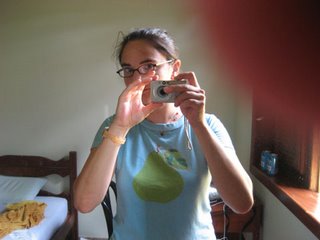
1)liga/disliga
2)para conservar a bateria não usa a tela da maquina
3)usa de correia da maquina bem segura a maquina sempre com duas mãos
4)comença a filmar um pouco antes da cena (da ação). 10 segundas. e para depois da cena (10 segudas) para assegurar que nada seja cortada do filme.
Tira um tempo para observar a cena antes de filmar e escutar o ambiente antes de gravar.
At the moment, my most exciting task is to make documentary videos with children and teenagers that will screen at the inauguration of the new cinema that CPCD is building in the center of Araçuaí. The short videos will address the history and culture of Araçuaí.
Here is a picture of the space. The cinema is supposed to be finished in February. I will send you and invitation!



CPCD already has itinerant cinemas that travel to surrounding rural communities. So far they have been screening films like Finding Nemo. They have not shown anything that has been made within this community. I am hoping that the videos that the children make will screen in the itinerant cinemas as well as the in the new permanent space and possibly other, more unpredictable, public sites. (CPCD also has an LCD projector.) CPCD is hoping to house an editing studio in the new cinema and create a filmmaking workshop for children and teenagers to continue making films.
I have already started to work on storyboards with some of the children.

I am working within a wide age range. A group of children ages 6-14 and a group of 16-17 year olds. Tomorrow I am running a workshop to teach the educators, the concerned mothers group, and the teenagers about the possibilities of video and photography. I spent the weekend making a PowerPoint presentation in Portuguese.
here is a piece of the presentation:
não mexe a mão não deixa a sua mão impedir a foto

1)liga/disliga
2)para conservar a bateria não usa a tela da maquina
3)usa de correia da maquina bem segura a maquina sempre com duas mãos
4)comença a filmar um pouco antes da cena (da ação). 10 segundas. e para depois da cena (10 segudas) para assegurar que nada seja cortada do filme.
Tira um tempo para observar a cena antes de filmar e escutar o ambiente antes de gravar.


